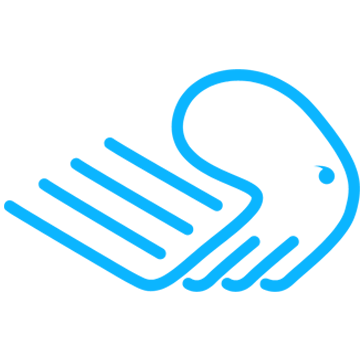
Create Websites with CHEETAH
A detailed look at banners (3)
Banners as link targets (anchors)
Banners can also be used as link targets in "Cheetah", i.e. it is possible to link directly to individual banners. The keyword for this is "Anchor". In the category "Advanced (and mobile)" you can define such an "anchor" by checking the corresponding checkbox. After that you only have to give the anchor a unique name for the website and it is ready for use.
A typical application for such an anchor is often found on web pages that are inherently very long. In this case, it is a good idea to give the visitor the possibility to return to the top of the page at certain points (usually from the footer) by simply clicking on an appropriate button (otherwise he might have to scroll up). The following steps are necessary for this:
-
You define an anchor in the top banner of your web page, e.g. with the name "Top".
-
at the bottom of the last banner of your website (of course, this can also be the footer), position a button (button with, for example, an "arrow up" icon) and link the "Top" anchor there (header menu link icon):
Now, when the website visitor clicks on this button, the web page is aligned on the screen so that the first banner is visible again.
This methodology is also often used when you want to make different areas of a website (which have been created as banners) accessible via a menu structure. Basically every element in "Cheetah", which offers a link function in its header menu, can also link to anchors, whereby these can also be located on other pages of the website. But direct links in the text to anchored banners are of course also possible.
Sticky Header
The top banner of a web page can still be configured so that it does not change its position when the web page is scrolled, i.e. it generally always remains "stuck" to its position. Such a banner is called a "Sticky Header". The corresponding setting option can also be found here in the "Advanced (and mobile)" category - provided that the top banner is focused:
By the way, this property can be set separately for desktop and mobile web page variant respectively.
Show and hide banners at runtime
Another interesting function is to make a panel that is initially invisible visible either time-controlled or by means of an action (e.g. a click on a button). For this purpose, each panel has the property "Hide panel" in its properties menu.
1nd case
The "Hide Panel" property of the selected banner is set to "Enable" in the Settings Panel. Select "by time" as the type and then set a time duration (for example, 10 seconds). After saving and republishing the page, the following will happen: The web page will pop up, but the corresponding banner will be invisible. Only after 10 seconds it will be displayed automatically.
2nd case
In this case, select "Action" as the type. Then give the panel a unique name, overwriting the default (e.g. "Additional InfoPanel"). Now you still need a concrete "action" such as a mouse click on a button to make the panel visible (or mutually invisible). You can place such a button on a permanently visible banner and equip it with the "Show Hidden Panel" forwarding function:
From the drop-down box select the appropriate banner and in the "Choose text on show" field write the text that should appear on the button after the banner fades in.